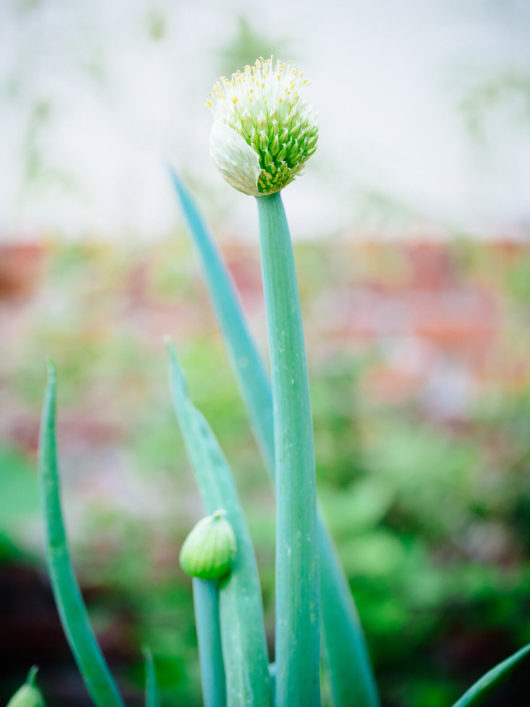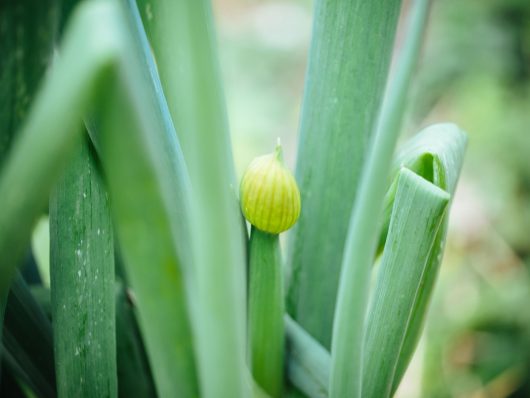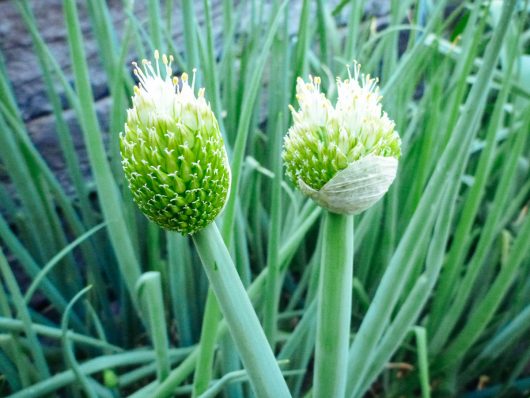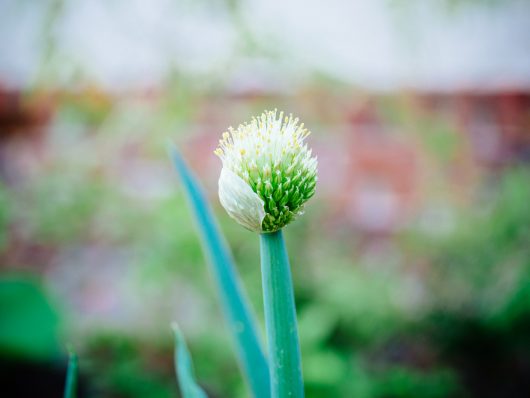
Over the weekend, surrounded by fragrant allium blooms, I harvested the last of last season’s crop — a mix of red, white, and yellow onions that I had grown from seed back in October. I loved the display of pompom-like flowers, even though onions are not supposed to bolt (and why not?). Even then, only a handful of onions out of the hundred I had planted had bolted.
What causes some onions to flower while others do not?

Onions are biennial plants. They don’t set seed until their second year of growth. During the first year, the leaves gather energy through photosynthesis and use the energy to develop the bulbs underground. As autumn rolls around, the leaves wither and the onions go dormant.
We usually harvest onions at the end of their first year, when their leaves start to die back. But if left in the ground, the bulbs survive on the stored energy throughout winter, and new leaves and roots will re-emerge in the spring. Having gone through the complete growing cycle, onions will also send up flower stalks (a process called bolting) and produce seed in this second year.
Even if you are only growing onions for one season, temperature fluctuations can deceive onions into completing their life cycle prematurely. If the weather is warm during the early stages, onion seedlings will grow vigorously until cold weather slows their development.
If a cold snap suddenly occurs, the onions will have grown to sufficient size to sustain flowering and be forced into early dormancy.
As the weather warms again, they may be confused into believing they have already gone through two growing seasons and must set seed for the next generation of onions.


If young seedlings are less than the diameter of a pencil by the time temperatures drop, they are not affected by their first winter. Their size is not significant enough to realize the cold is upon them and they must initiate flower stalk production.
Because of this fine line between seasons, determining the right time to plant onions in your zone is important. Too soon, and your whole crop may flower the following spring as the bulbs will have grown enough to think they’ve completed their cycle after winter. Too late, and you may end up with smaller bulbs, if the delicate seedlings are strong enough to withstand winter at all.

Once your onions bolt, their bulbs stop growing and their storage capacity diminishes. Bending over or cutting off the flower stalk will not re-initiate bulb development. The rigid stalk penetrates the bulb and after harvest, its early decay causes the entire onion to decay.
That said, onions that have flowered are still edible. They should be cured, the leaves and flower stalk removed, and the bulb eaten within a couple of months.
Even if you find a few of your onions bolting, all is not lost. You can snip the blossoms to infuse with olive oil or vinegar, or use them as a pretty and tasty garnish on your plate. The flowers (as well as the stems) have a mild onion flavor similar to scallions.
You can also enjoy the flowers while they last and leave the onions in the ground to collect seed for next season — an unexpected benefit!

This post updated from an article that originally appeared on June 20, 2011.
The post Bloomin’ Onion: Why Some Onions Have Flowers appeared first on Garden Betty.
Spring is here! And to help you figure out what to do with all those weird vegetables and parts you thought you couldn't eat, The CSA Cookbook makes an excellent addition to your cooking or gardening library.
from Garden Betty https://ift.tt/2KD3tjR
No comments:
Post a Comment